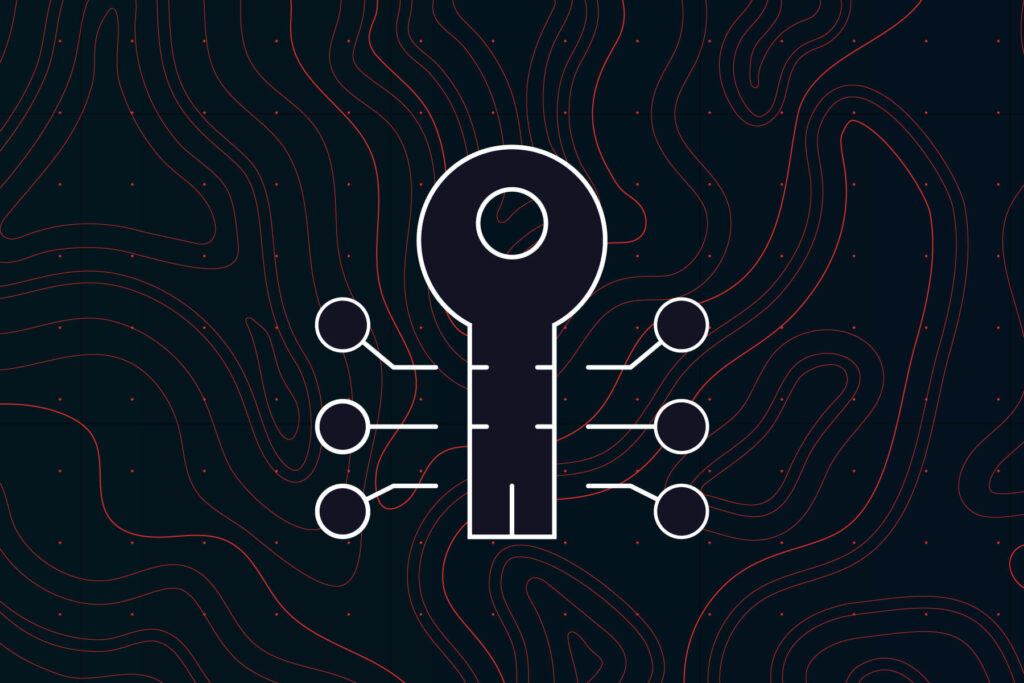SAML is an acronym used to describe the Security Assertion Markup Language (SAML). Its primary role in online security is that it enables you to access multiple web applications using one set of login credentials. It works by passing authentication information in a particular format between two parties, usually an identity provider (idP) and a web application.
What SAML is and How it Works
SAML is an open standard used for authentication. Based upon the Extensible Markup Language (XML) format, web applications use SAML to transfer authentication data between two parties – the identity provider (IdP) and the service provider (SP).
The technology industry created SAML to simplify the authentication process where users needed to access multiple, independent web applications across domains. Prior to SAML, single sign-on (SSO) was achievable but relied on cookies that were only viable within the same domain. It achieves this objective by centralizing user authentication with an identity provider. Web applications can then leverage SAML via the identity provider to grant access to their users. This SAML authentication approach means users do not need to remember multiple usernames and passwords. It also benefits service providers as it increases security of their own platform, primarily by avoiding the need to store (often weak and insecure) passwords and not having to address forgotten password issues.
How Does OAuth Compare to SAML?
OAuth and SAML are both protocols we use for allowing access. However, the primary difference between the two is that we use SAML for authentication and OAuth for authorization.
If we revisit the airline analogy, the passenger’s ID is the SAML assertion, and the ticket the OAuth token. The airline uses the ID to verify the passenger’s identity before allowing them to board the aircraft. However, once the passengers are on the plane, the flight attendants use the ticket to confirm the passengers’ status and entitlement. For example, they may have a first-class ticket giving them access to seats and amenities not accessible by passengers in economy.
How Does SAML Work?
SAML works by exchanging user information, such as logins, authentication state, identifiers, and other relevant attributes between the identity and service provider. As a result, it simplifies and secures the authentication process as the user only needs to log in once with a single set of authentication credentials. So, when the user tries to access a site, the identity provider passes the SAML authentication to the service provider, who then grants the user entry. Let’s illustrate this concept with a real-world analogy.
What is SAML SSO?
SAML Single Sign-On is a mechanism that leverages SAML allowing users to log on to multiple web applications after logging into the identity provider. As the user only has to log in once, SAML SSO provides a faster, seamless user experience.
SAML SSO is easy to use and more secure from a user perspective as they only need to remember one set of user credentials. It also provides fast and seamless access to a site as every application they access does not prompt them to enter a username and password. Instead, the user logs into the identity provider and then accesses the relevant web application by clicking on its icon or navigating to the site via its URL.
SAML SSO also offers other benefits in addition to an enhanced user experience. It improves productivity for both the user and the Help Desk. Users do not need to waste time logging into multiple web applications with a unique set of credentials for each one. Consequently, they do not inundate the Help Desk with password reset requests, freeing the service team to attend to other service-related issues.
In addition to increased user satisfaction and improved productivity, SAML SSO also helps reduce costs. For example, Help Desks need to manage fewer calls. Instead of building a local authentication implementation for their solution, they can subscribe to an identity provider, reducing the labor cost of building and maintaining it internally.
SAML Example
SAML uses a claims-based authentication workflow. First, when a user tries to access a site, the service provider asks the identity provider to authenticate the user. Then, the service provider uses the SAML assertion issued by the identity provider to grant the user access. Let’s illustrate the workflow with an example.
- The user opens their browser and navigates to the service provider’s web application, which uses an identity provider for authentication.
- The web application responds with a SAML request.
- The browser passes SAML request to the identity provider.
- The identity provider parses the SAML request.
- The identity provider authenticates the user by prompting for a username and password or some other authentication factor. NOTE: The identity provider will skip this step if the user is already authenticated.
- The identity provider generates the SAML response and returns it to the user’s browser.
- The browser sends the generated SAML response to the service provider’s web application which verifies it.
- If the verification succeeds, the web application grants the user access.


